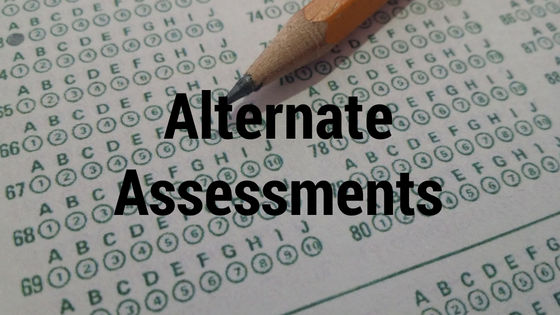
In recent years, there has been ballooning interest in developing more authentic and effective ways to measure student learning. Advocates of these alternative assessments, sometimes referred to as “authentic” or “genuine” assessment, argue that their approach focuses more on student learning rather than teaching techniques.
Some common types of alternative assessments include performance-based assessments (such as creating a product or performing a demonstration), oral presentations (such as speeches or presentations), or portfolio constructions (such as a collection of art samples or writing samples).
When developing alternative assessments, you can keep in mind the acronym AMPS:
- A = Audience. (On whom should the students focus when doing the work?)
- M = Main point and purpose. (Why are the students doing this particular assessment task?)
- P = Patterns and procedures. (What processes, steps, or parts should students include as they work through the assessment task?)
- S = Standards and criteria. (What should the ultimate product look like?)
With regards to pattern and procedures, since students may not be as familiar with your assessment – unlike a paper or a test – be explicit with the steps the students must take in order to complete the assignment correctly. The Center for Teaching and Learning at BYU provides a series of guidelines for creating alternative assessments:
| Guideline | Example |
| Define the instructional outcome you want to assess as clearly and unambiguously as possible in terms of both the subject-matter content and the set of skills or operations that a skillful performer would exhibit. | Students will perform five types of Cha Cha steps in correct dance position without error. |
| Distinguish between those outcomes that can validly be assessed solely by performance assessments and those that can be assessed just as effectively by objective measures. | Students would have a difficult time demonstrating dance steps on paper. |
| Create tasks that elicit evidence of the student’s ability to perform the targeted skill. | Set aside a block of classroom time for students to dance with a partner, two or three couples at a time. Allow students to dance for at least 2 minutes so they have time to demonstrate all the steps they know. Students should have sufficient time to practice the steps before they are assessed. |
| Decide what kinds of teacher guidance can be used while still allowing students the freedom to learn and do it their own way. | Students may do the steps in whatever order they would like. Teacher may put the names of the different steps on the board to help students remember them if needed. |
| Try out the assessment and make revisions as necessary. | Revisions could include giving more detailed instructions and expectations to the students or inviting an assistant to write down dictated comments while the teacher keeps his or her attention on the dancers. |
With these guidelines in mind, the sky is the limit for creating alternative assessments. With the advent of the Internet, countless websites and blogs have examples of creative assessments that can be used to demonstrate student learning in real-world settings. While alternative assessments may take more time to create and be more subjective at times, the reward of alignment with student learning outcomes is often too great to deny.

